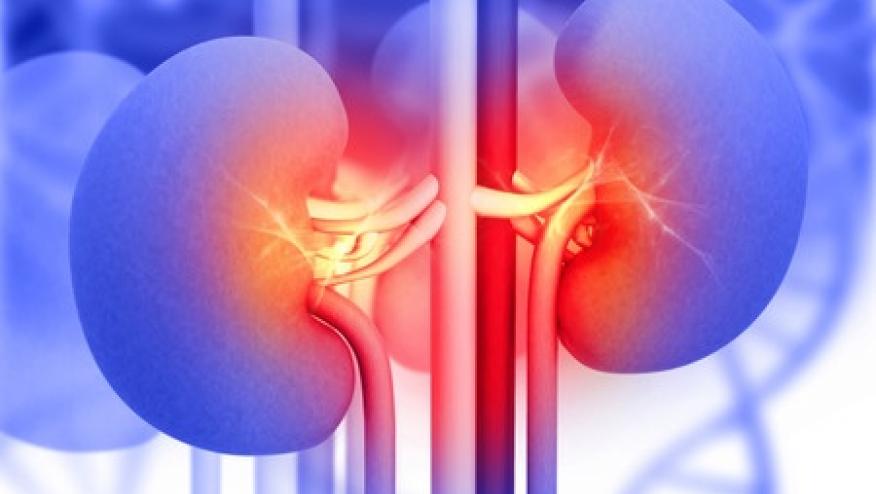ESRD Death Declines in Vasculitis Patients Save

In the past 2 decades, mortality from end-stage renal disease (ESRD) among U.S. patients with granulomatosis with polyangiitis (GPA) has declined significantly, a nationwide study found.
During the years 2010-2014, the mortality rate from ESRD among patients with GPA fell to 15.3 per 100 patient-years from 19 per 100 in 1995-1999, for an adjusted mortality hazard ratio for the later cohort of 0.77 (95% CI 0.66-0.90, P=0.005), according to Zachary S. Wallace, MD, of Harvard Medical School in Boston, and colleagues.
"These findings are encouraging and likely reflect improved management of both GPA and ESRD," the researchers wrote in Arthritis Care & Research.
GPA is a type of vasculitis characterized by inflammation of the small and medium vessels, with renal involvement occurring in 70%. Approximately one-quarter of those with kidney manifestations develop ESRD, which is associated with early death from cardiovascular disease and infection.
Because data on the incidence and mortality associated with ESRD in GPA are currently lacking, Wallace's group examined outcomes in a national ESRD registry for the years 1995 to 2014.
The United States Renal Data System includes more than 90% of patients on dialysis or who have received a kidney transplant, with nephrologists being required to submit a report detailing the cause of ESRD as well as demographics and comorbidities for each patient initiating treatment.
Patients were divided according to year of entry into the database: 1995-1999, 2000-2004, 2005-2009, and 2010-2014. The earliest cohort was considered the reference group.
Their mean age at ESRD diagnosis was around 60 across the time frames, and slightly under 60% were men. Some comorbidities varied over time, with diabetes increasing from 7.3% in the 1995-1999 group to 20.1% in the 2010-2014 group, and hypertension rising from 52.5% to 76.8%.
Those trends were "concerning," according to the researchers. "While these trends likely reflect those in the general population, these findings highlight the importance of assessing and addressing modifiable risk factors in GPA patients to minimize the risk of cardiovascular events," they stated.
During the entire study period, 5,929 patients developed GPA-associated ESRD. Overall incidence rates per million U.S. population for the 5-year subgroups initially increased from 0.81 (95% CI 0.70-0.92) in 1995-1999 to 0.94 (95% CI 0.83-1.05) in 2000-2004, and then to 1.15 (95% CI 1.03-1.27) in 2005-2009, then stabilizing in the 2010-2014 group, at 1.12 per million (95% CI 1-1.24).
This recent stabilization "could reflect advances in the management of patients with GPA in recent years, as it suggests that fewer GPA patients are progressing to ESRD, given stable GPA incidence itself," the authors noted.
Overall, there were 1,795 deaths from ESRD among GPA patients. The incidence of death per 100 patient-years was 19 (95% CI 17.2-21.1) in 1995-1999, 16.9 (95% CI 15.4-18.7) in 2000-2004, 16.2 (95% CI 14.9-17.7) in 2005-2009, and 15.3 (95% CI 14-16.7) in 2010-2014 (P for trend =0.01).
After adjusting for multiple factors including age, sex, body mass index, comorbidities, region of the country, and smoking, the hazard ratios for mortality compared with 1995-1999 were 0.90 (95% CI 0.77-1.05) for 2000-2004 and 0.82 (95% CI 0.71-0.96) for 2005-2009 (P for trend = 0.005).
The results on mortality were similar after additional adjustment for whether a patient was given a transplant, the researchers noted.
Cardiovascular disease was the most common cause of death (30%) during the overall study period, followed by infection (16%). Among the infectious causes of death, 61% related to sepsis and 29% to pneumonia.
Compared with the 1995-1999 cohort, the age- and sex-adjusted hazard ratios for mortality from cardiovascular disease in the various cohorts were (P<0.001 for trend):
2000-2004: 0.84 (95% CI 0.65-1.08)
2005-2009: 0.57 (95% CI 0.45-0.74)
2010-2014: 0.64 (95% CI 0.50-0.82)
For infectious mortality, the hazard ratios for the groups, respectively, were 0.84 (95% CI 0.59-1.19), 0.79 (95% CI 0.57-1.09), and 0.47 (95% CI 0.32-0.67, P<0.001 for trend).
"Despite these improvements, cardiovascular disease and infection remain common causes of death in GPA-ESRD. Future studies evaluating cardiovascular risk management and the risks and benefits of immunosuppression in ESRD patients are necessary," the authors concluded.
A study limitation was the lack of information in the database on treatment of GPA and comorbidities.










If you are a health practitioner, you may Login/Register to comment.
Due to the nature of these comment forums, only health practitioners are allowed to comment at this time.